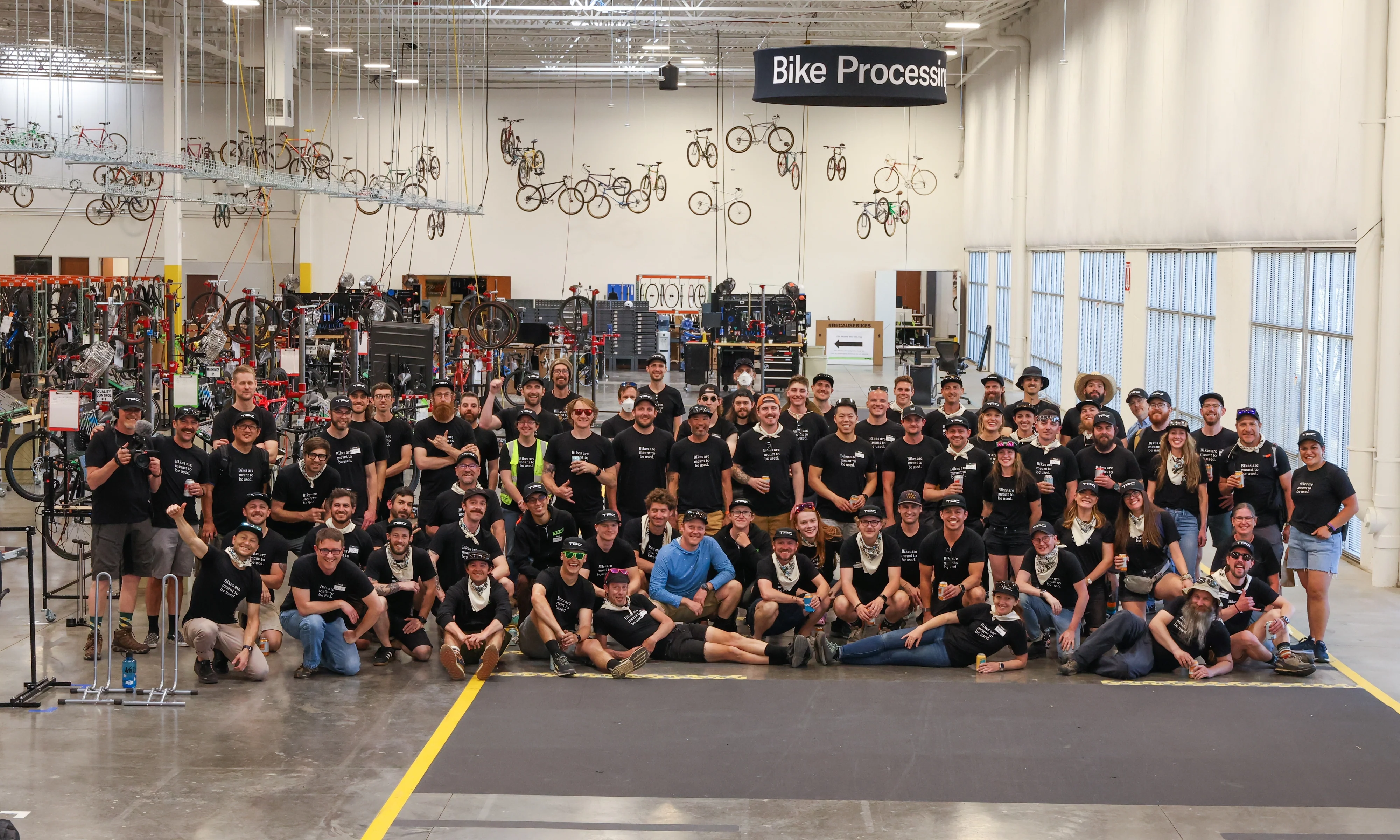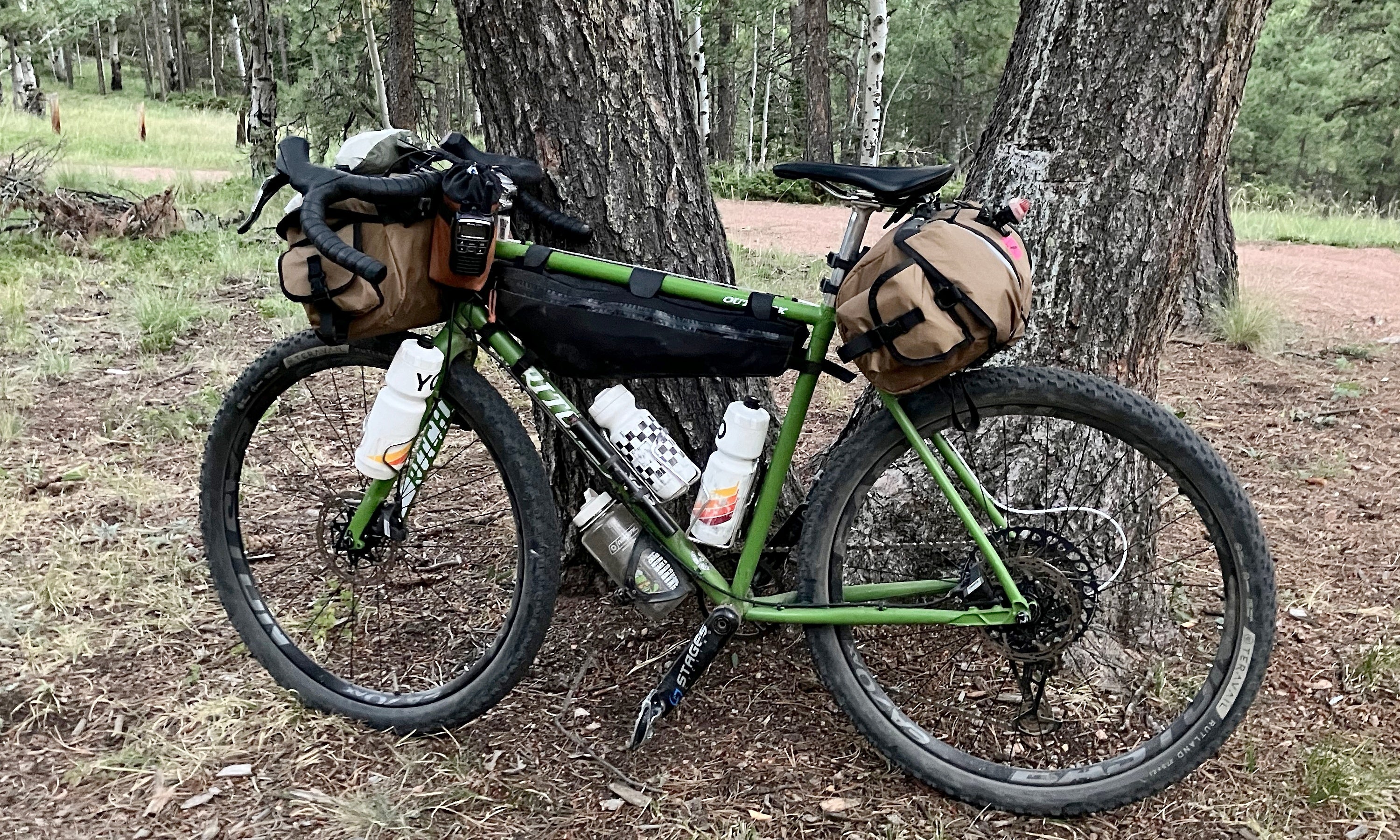When it comes to premium dropper posts, two options have stood out as the ones to have on your bike — the RockShox Reverb AXS and the Fox Transfer Factory. Both will raise and lower your saddle on command via a handlebar-mounted remote. Both have proven to be decently reliable. Both are available in a wide range of seat tube diameters and drop lengths. So why is one dropper two times more expensive than the other? Can it possibly be twice as good?
Fox Transfer Factory Specs
- Weight: 640g (175mm drop option)
- Total Length: 503.1 mm (28mm is the actuator)
- Price: $359.00 remote sold separately
- Notes: Works with carbon saddle rails with additional clamp purchase

FOX Factory Series Transfer Dropper Seatpost - 2025
$184.99
RockShox Reverb AXS Specs
- Weight: 701g including battery (170mm drop option)
- Total Length: 480mm
- Price: $861
- Notes: Commonly found for under $600 recently at most online retailers. Works with carbon saddle rails with additional clamp purchase

RockShox Reverb AXS Dropper Seatpost (AXS Battery Sold Separately)
$245.99
Fox Transfer Factory

The Fox Transfer dropper seatpost is on its second iteration, which has many improvements over its first-generation release: much lower stack height, a completely revised saddle clamp, slightly revised internals, updated remote options, and a reduction in overall length across all sizes. All of these improved upon what was already a great dropper post making the Transfer even more reliable and easier to service as well.
Fox sells the Transfer post in both a Performance Elite black coating as well as their blingy Factory Kashima coating across all seat post sizes and drops, letting you find the post that meets your needs. There are also several Fox remote options to choose from, and because the cable head is at the actuator, it’s compatible with most aftermarket levers.
We see more Fox Transfers on bikes sold to TPC than any other dropper post and they have definitely gained a reputation for being very dependable, but they aren't perfect. Because the post has been out for a while now and they’re so ubiquitous, common reliability issues have come up.
The most common issue is a loss of nitrogen charge, giving the post a very slow return or preventing it from coming up all the way to the top of its travel after being dropped. The other common issue is corrosion inside of the post from water ingress. This can really cause some damage inside the post and it’s often better to replace the entire post if it happens.

Then there is the matter of servicing a Fox Transfer. I am the head suspension tech here at TPC and know my way around the inside of the Transfer quite well. We service just about everything under the sun when it comes to suspension and the Transfer requires more specialty tools to service than any other suspension component, most of which are quite expensive. Servicing the Transfer at home is out of the question for most home mechanics due to the cost of the tools and specialty equipment needed to perform a rebuild.
The internals of the Transfer are also quite unique compared to other posts on the market. There is some sort of wizardry going on inside of there! There are many times when I have opened a Transfer for service and found all the oil to be foam. In any other suspension product, this would cause it to not work at all. But somehow the Transfer will still be rock solid and be functioning perfectly. Very impressive!
RockShox Reverb AXS

Before we talk about the RockShox Reverb AXS we need to address the standard RockShox Reverb. The Reverb has been out for a long time (since 2010) and has become well-known for NOT being reliable. It often develops a “squish” that causes the saddle to drop slightly when weighted. The only way to fix this is with a complete teardown and rebuild. This problem comes from the internal hydraulic remote and how it actuates the poppet valve on the bottom of the post. There are a few aftermarket fixes that eliminate the remote and make the Reverb much more reliable. The Wolf Tooth ReMote Sustain is a common solution. I've installed quite a few of them over the years and even used one on my personal bike for a while.
The Reverb AXS post is quite different from the standard Reverb, mostly due to its wireless actuation. The “poppet” valve is now at the head of the post and there’s no chance of it ingesting air like older Reverb designs. This means it almost never gets squishy!

All modern Reverbs also have a vent valve which allows you to purge any air that may have gotten into the system over time. I've found that about half of the time, performing the vent valve procedure will get the post squish-free and operating perfectly again. This is a 1-2 minute job with the Reverb AXS and the tool to do it comes with the post. If you have to service the Reverb AXS, it is among one of the easiest suspension components for home mechanics to rebuild. I can get one torn down and rebuilt in under 20 minutes and it only requires 2 special tools.
So what are the downsides to the AXS Reverb then? The biggest is the eye-watering $861 MSRP. Most riders will probably struggle to justify buying a seatpost that's over twice as much as other premium options. My opinion though it that it's absolutely worth it. Both of my mountain bikes now have Reverb AXS seat posts, and if I wanted one for my gravel bike, I'd absolutely choose the Reverb AXS XPLR post.
The other elephant in the room is the fact that the Reverb AXS requires a battery. If you don’t pay attention to the charge, your seatpost can die mid-ride while fully extended or dropped. I have had this happen to me on more than one occasion, but I have learned my lesson and always have a fully charged backup battery on rides. For some, this may be an absolute deal breaker.
The Reverb AXS also has a couple of unique qualities that make it extra versatile. It's wireless, which means it can be installed on any bike, even if it doesn't have routing for a dropper post. It can also be used with both flat bar and drop bar SRAM AXS shifters as well as SRAM’s wired blips. You can even swap the post between bikes. For a while, I only had one Reverb AXS and would swap it between my hardtail and full-suspension bikes. This is fast and easy and can help soften the blow of the higher price.
Its overall length is also among the shortest dropper posts you can buy. Some small and extra small frames run into issues with the actuator of wired seatposts interfering with the internals of the frame and preventing the post from being able to be lowered all the way into the seat tube.
The Wireless Electronic Fox Transfer Neo
Fox is expected to release a wireless electronic competitor to the Reverb AXS called the Transfer Neo. Once I get my hands on a few Transfer Neos and have the chance to test them out and tear a couple down, I’ll update this post with my thoughts on how it stacks up against the Reverb AXS!
Final Thoughts
You can't go wrong with either dropper post here but I firmly believe the Reverb AXS post is the best dropper post on the market. I may even go out on a limb here and say it's the best product in the entire RockShox family. The latest Fox Transfer has improved its reliability, but servicing the post can be costly and it’s not something every bike shop is capable of or willing to do. If you're on the fence about whether or not to purchase a Reverb AXS, definitely make the leap (as long as you can afford it). I promise you won't regret it!

























